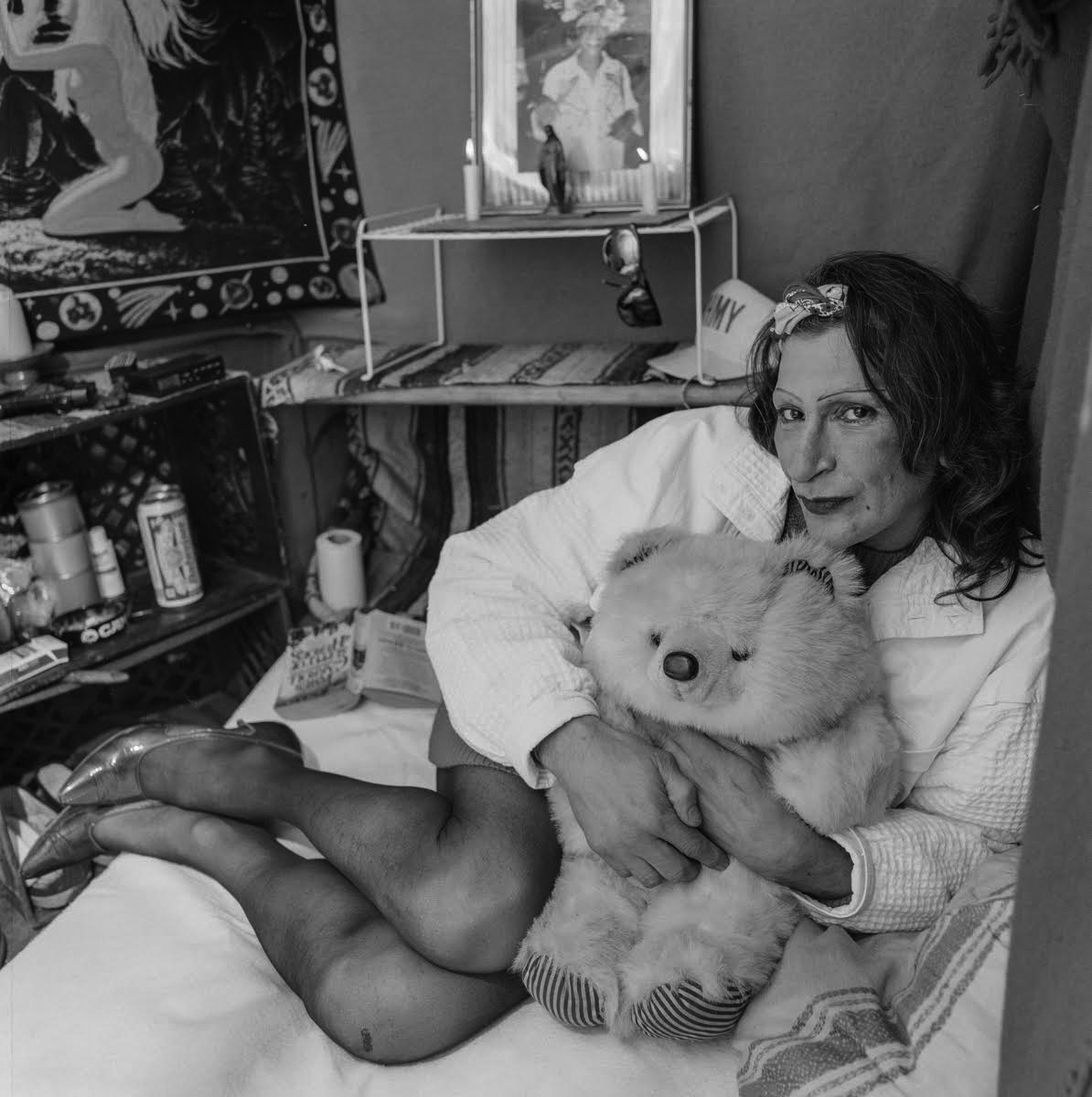Johnson’s death was ruled an accident/suicide, but Marsha’s friends and trans activists, especially Victoria Cruz (from the New York City Anti-Violence Project), fought this version over the years and through an increasing amount of evidence. They said she never wanted to die, and that the previous night witnesses saw her in a state of distress because she was being harassed by men—something common among New York sex workers, especially those like Johnson, an African American gender dissident. Maybe she was murdered, or perhaps she accidentally fell into the freezing waters of the Hudson. Sylvia, who was not living in New York at that time, came back to Manhattan to honor Johnson’s death, maintain her memory, and fight to reopen the case along with others until the authorities agreed to change the cause of death to “undetermined causes.”
Part of the information about Sylvia Rivera’s life in the piers comes from a recorded interview that Randy Wicker did with her in 1992.
Interview with Sylvia Rivera, WPQG News, New York, April 6, 1996.
David Stout, “Eviction Day Along the Curb of a Dead Road,” The New York Times, April 3, 1996.
Ibid.
Here transness should be understood, as Jack Halberstam points out, as the understanding of the body as fragmentary and internally contradictory, remapping gender and its relations to race, place, class, and sexuality. See Jack Halberstam, Wild Things: The Disorder of Desire (Durham: Duke University Press, 2020). See also C. Riley Snorton, Black on Both Sides: A Racial History of Trans Identity (Minneapolis: University of Minnesota Press, 2017).
City Club of New York, The Wastelands of New York City: A Preliminary Inquiry into the Nature of Commercial Slum Areas, Their Potential for Housing and Business Redevelopment (New York: City Club of New York, 1962).
Proposals like Fuller and Shoji Sadao’s Manhattan Dome (1964) went even further, cutting Lower Manhattan off from the rest of the island, encapsulating the rest of it under a dome; Kevin Roche proposed the encapsulation of an autonomous atmosphere in the Ford Foundation building (1967).
Wendell E. Pritchett, “The ‘Public Menace’ of Blight: Urban Renewal and the Private Uses of Eminent Domain,” Yale Law and Policy Review 21, no. 1 (2003): 1199.
This was the term that Lewis Mumford used in an article published in 1962. Lewis Mumford, “The Skyline: Mother Jacobs’ Home-Remedies,” New Yorker, December 1, 1962.
Aaron Shkuda, The Lofts of SoHo. Gentrification, Art, and Industry in New York, 1950–1980 (Chicago: University of Chicago Press, 2016), 15.
Lola Hinojosa, “Gordon Matta-Clark’s Day’s End (1975),” Museo Nacional Centro de Arte Reina Sofia, 2007, ➝.
Grace Dunham, “Out of Obscurity: Trans Resistance 1969–2016,” in Trap Door: Trans Cultural Production and the Politics of Visibility, eds. Reina Gossett, Eric A. Stanley and Johanna Burton (Cambridge: MIT Press, 2017), 91.
Popular narratives said that Johnson was the one who ignited the riots by throwing a brick at the police. As a reminder, Marsha carried a cardboard brick every gay pride (an actual brick was too heavy to carry during the celebrations).
Lisa Duggan, “The New Homonormativity: The Sexual Politics of Neo-Liberalism,” in Materializing Democracy, eds. Russ Castronovo and Dana D. Nelson (Durham: Duke University Press, 2002). See also Martin F. Manalansan IV, “Race, Violence, and Neoliberal Spatial Politics in the Global City,” Social Text 23, nos. 3–4, (2005): 84–85.
Martin Duberman, Stonewall: The Definitive Story of the LGBTQ Rights Uprising that Changed America (New York: Penguin Random House, 2019), 309–310.
“Current Trends Prevention of Acquired Immune Deficiency Syndrome (AIDS): Report of Inter-Agency Recommendations,” Morbidity and Mortality Weekly Report 32, no. 9 (1983): 101–3.
The idea of a chosen kin is based in part on Donna Haraway’s notion of “staying with the trouble” of living with and in relation to nonhuman others (in this case, HIV and AIDS), which are kin in the sense of “something other, and more than entities tied by ancestry or genealogy.” See Donna Haraway, Staying with the Trouble: Making Kin in the Chthulucene (Durham: Duke University Press, 2016).
For more on HIV/AIDS kin and its architecture, see Ivan L. Munuera, “HIV and AIDS Kin: The Discotecture of the Paradise Garage,” Thresholds 48 (Spring 2020): 133–147.
On May 31, 1987, President Reagan finally declared AIDS a public health emergency, giving his first major address on AIDS. It was at an outdoor speech in Washington organized by amfAR, the American Foundation for AIDS Research.
Steven Epstein, Impure Science: AIDS, Activism, and the Politics of Knowledge (Berkeley: University of California Press, 1996), 55.
This idea continued even into the late 1990s with authors like Gabriel Rotello, who blamed urban, gay, sexual culture for causing AIDS and the continued spread of HIV infection. See Gabriel Rotello, Sexual Ecology: AIDS and the Destiny of Gay Men (New York: Dutton, 1997).
See Michael Bronski, “AIDing Our Guilt and Fear,” Gay Community News, October 9, 1982.
David France, How to Survive a Plague (New York: Alfred A. Knopf, 2016), 37.
Maurice Carroll, “State Permits Closing of Bathhouses to Cut AIDS,” The New York Times, October 26, 1985.
In order to recover this and other histories, it is essential to highlight the work of the NYC LGBT Historic Sites Project, active since 2015, and the efforts of their founders and directors, Andrew Dolkart, Ken Lustbader, and Jay Shockley.
Andil Gosine, “Non-White Reproduction and Same Sex Eroticism: Queer Acts Against Nature,” in Queer Ecologies: Sex, Nature, Politics, Desire, eds. Catriona Mortimer-Sandilands and Bruce Erickson (Bloomington: Indiana University Press, 2010), 149–150.
Interview with Sylvia Rivera, WPQG News.
